Ghostwire Tokyo review: a very Japanese open world
Spooky Shibuya

The sight of Shibuya’s famously busy Scramble Crossing completely deserted would be more eerie if it hadn’t already happened a couple years earlier.
Of course, in Ghostwire: Tokyo, people aren’t locked down indoors because of a virus. Instead a strange fog has swept the city and literally spirited everyone away, leaving behind only their clothes and belongings.
The only survivor is your protagonist, Akito, a seemingly ordinary guy who’s been fused with a mysterious spirit calling himself KK that’s not only keeping him alive but also giving him extraordinary powers that can help him rescue his hospitalised sister and figure out what the hell’s going on.
It’s a simple enough set-up that takes you a wild ride through the Japanese capital at its most hauntingly gorgeous. Although this comes from the creators of The Evil Within and the original Resident Evil, the tone is more Eastern Ghostbusters where the spooks are part of the charm in what is a very thoroughly Japanese open world game quite unlike anything else in style, even if the systems are very familiar.
It’s in your hands
Ghostwire: Tokyo does share a couple things in common with the latest instalments of Capcom’s survival horror series though: the game is played in the first-person perspective (with the exception of story cutscenes) while there’s also a lot of attention on your protagonist’s hands.
Instead of conventional weapons, having KK inside your head gives you an arsenal of magical powers known as ethereal weaving, with elemental energy pulsing from your hands, giving you the power of wind, fire and water to purge your supernatural enemies. These are a fascinating mixture of urban legends like faceless salarymen who remind us of the Slenderman or the scary women wielding a massive pair of scissors, as well as yokai based on Japanese mythology, though the latter aren’t all hostile.




You’ll also unlock paper talismans that can help you in combat, from stunning enemies to creating camouflage if you prefer to go in with a stealthy quick purge. For those who prefer something a little more conventional, you can even wield a bow, though ammo is fairly limited.
That said, underneath all the flourishes, Akito’s powers aren’t that different from a first-person shooter (wind is basically your pistol, water’s wide arc is your shotgun, while fire’s high damage and sparing ammo is a rocket launcher) only somewhat clunkier, especially as you’re encouraged to charge up your shots while dealing with swarms of Visitors from all directions.
Things do improve as you level up your skill tree to speed up some attacks but it’s additional elements that elevate the combat, such as a shield that allows you to parry attacks or finishing off enemies by using your ethereal weaving to grab their core either up close or at range. These extend to other actions where Akito is sealing curses with hand gestures (for added immersion, you can even use the DualSense’s touchpad for these). All of these contribute to some of the most beautiful hand animations we’ve ever seen in a game.

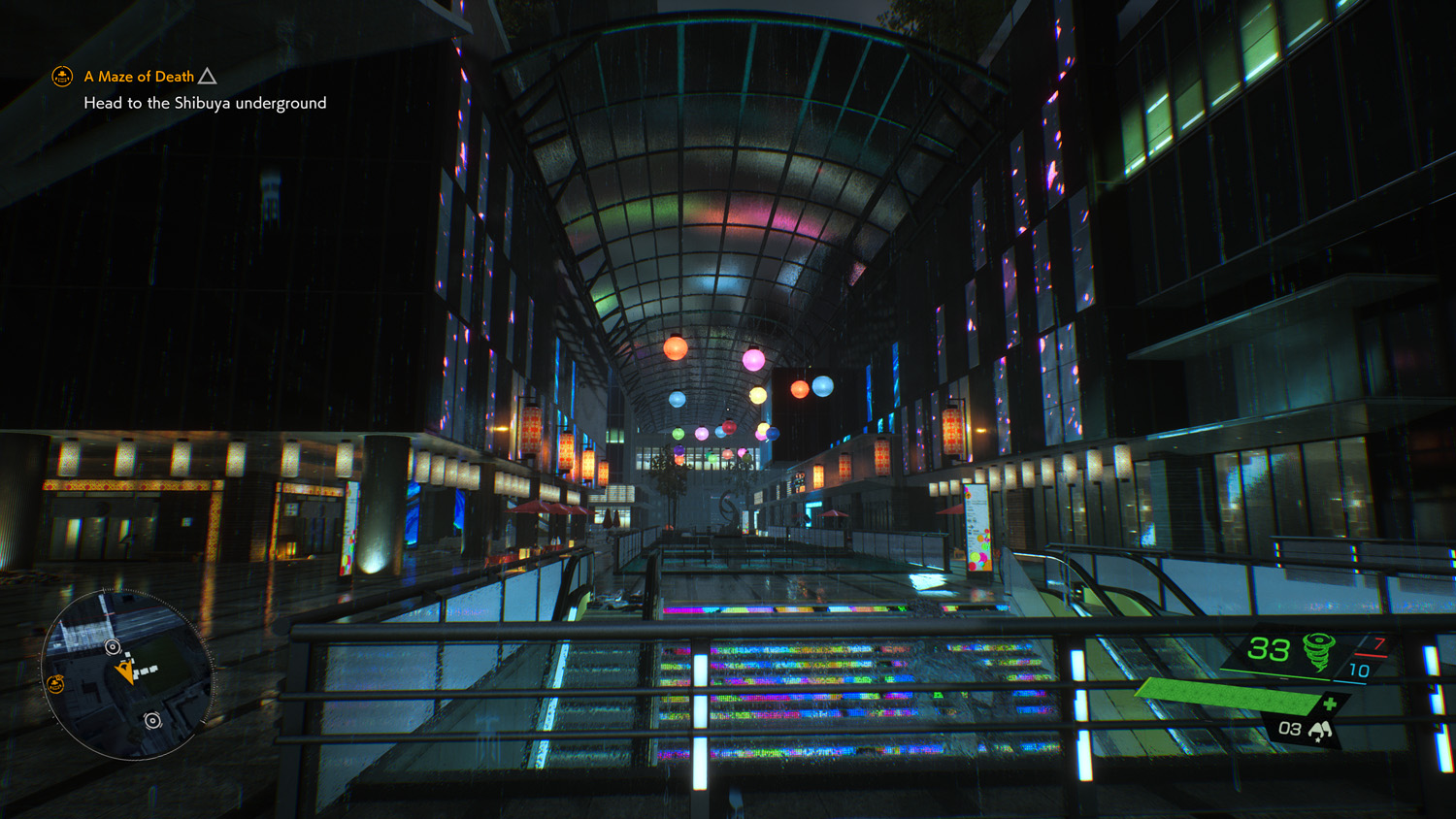
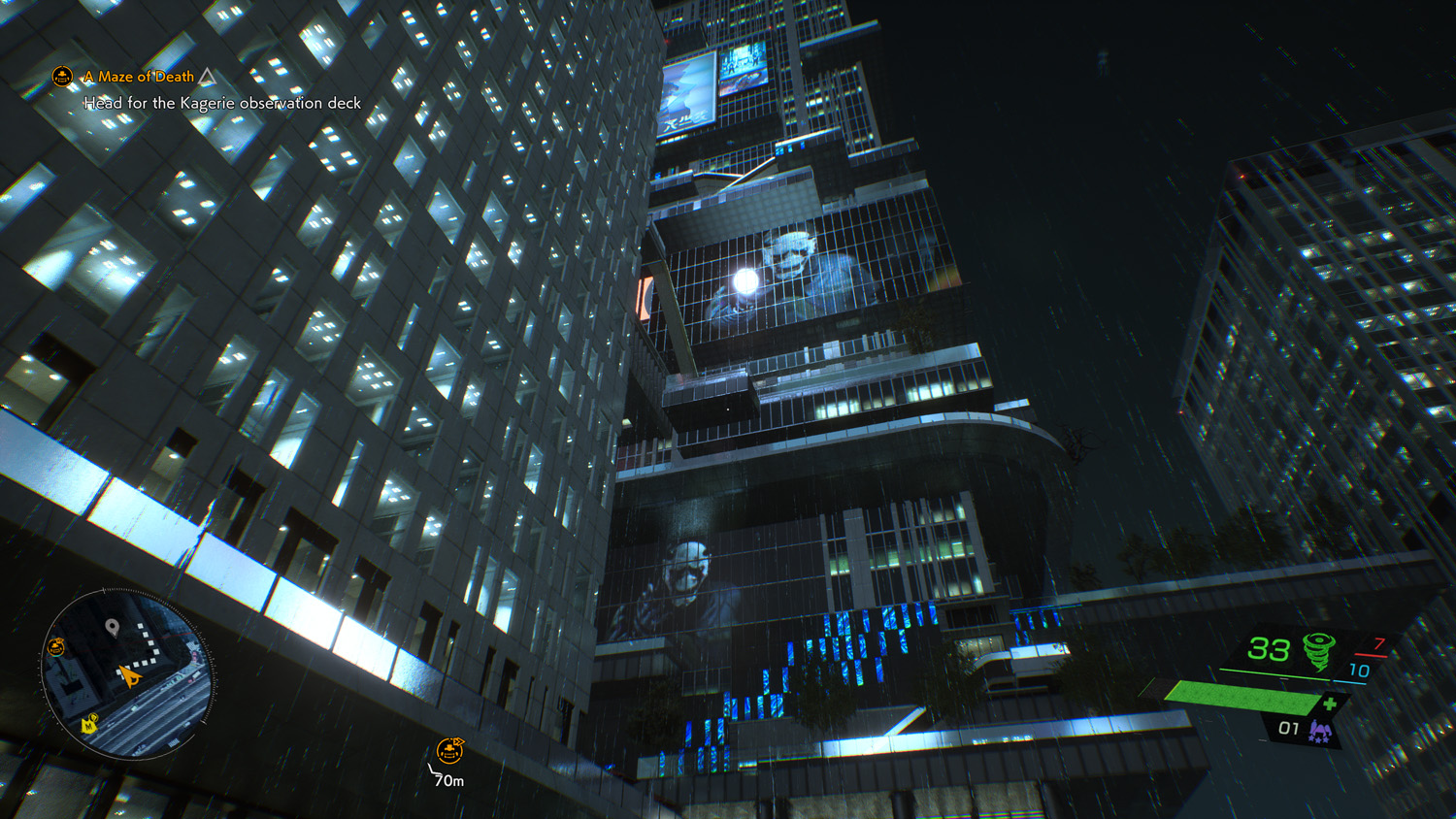
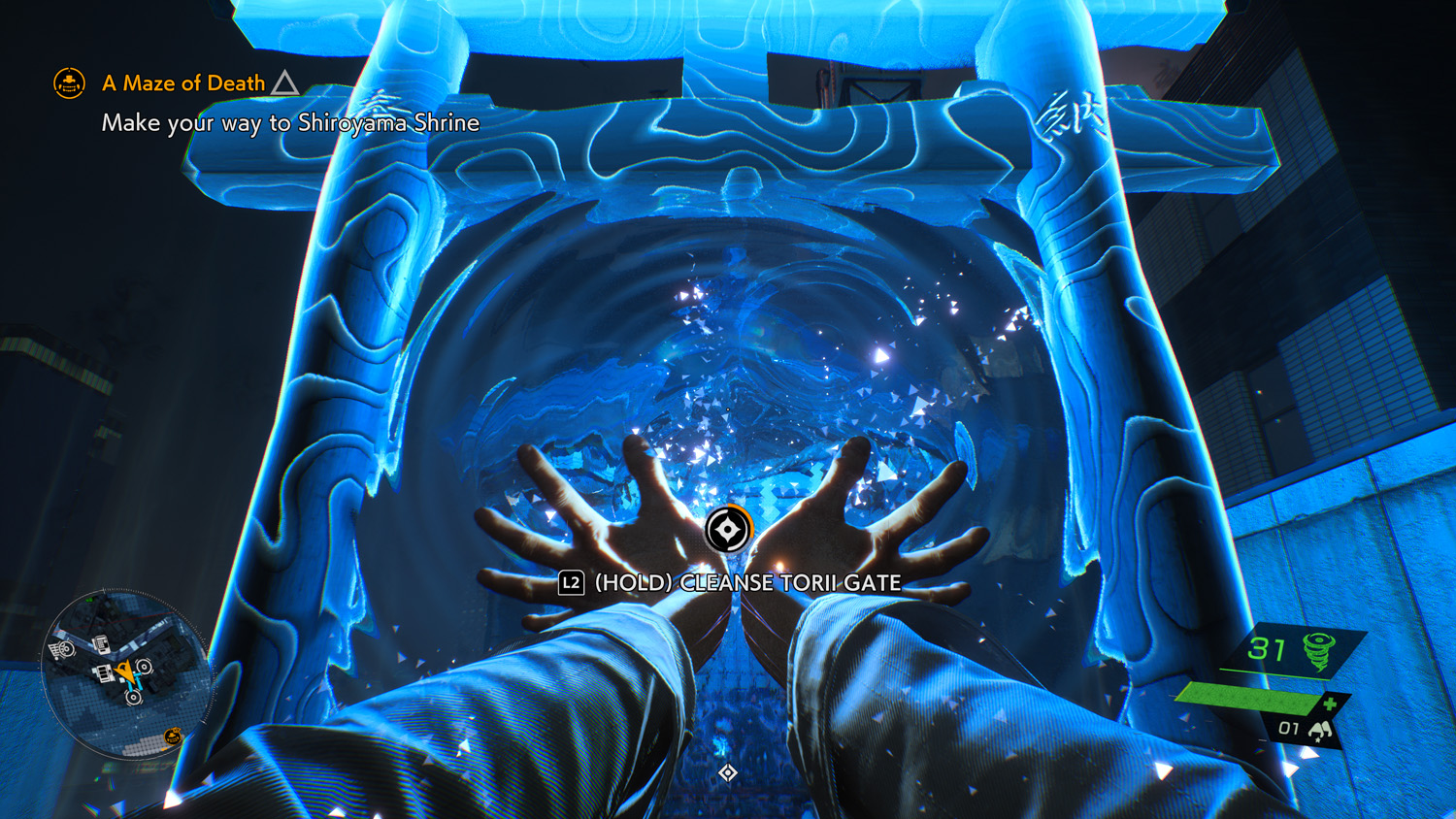
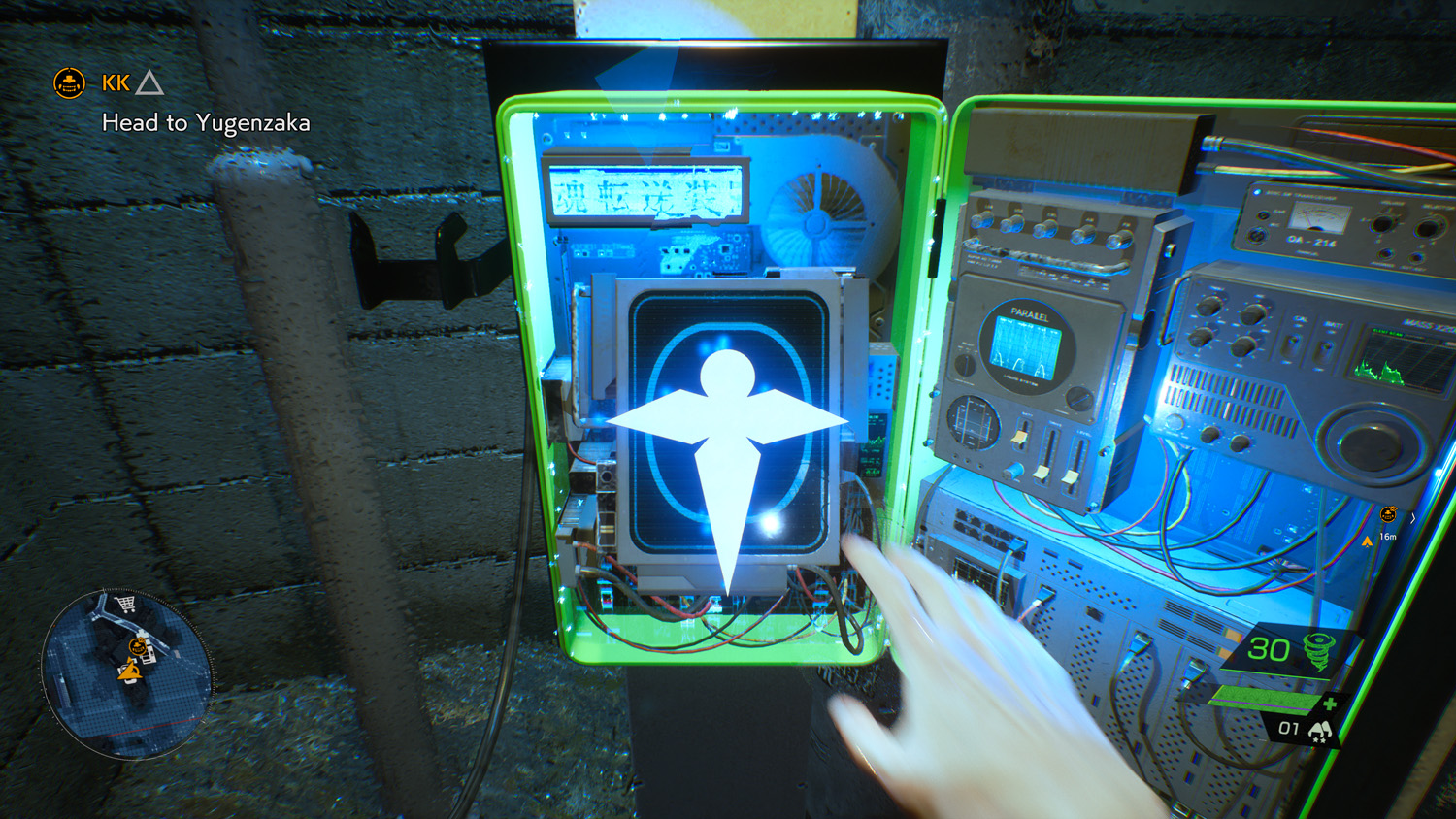
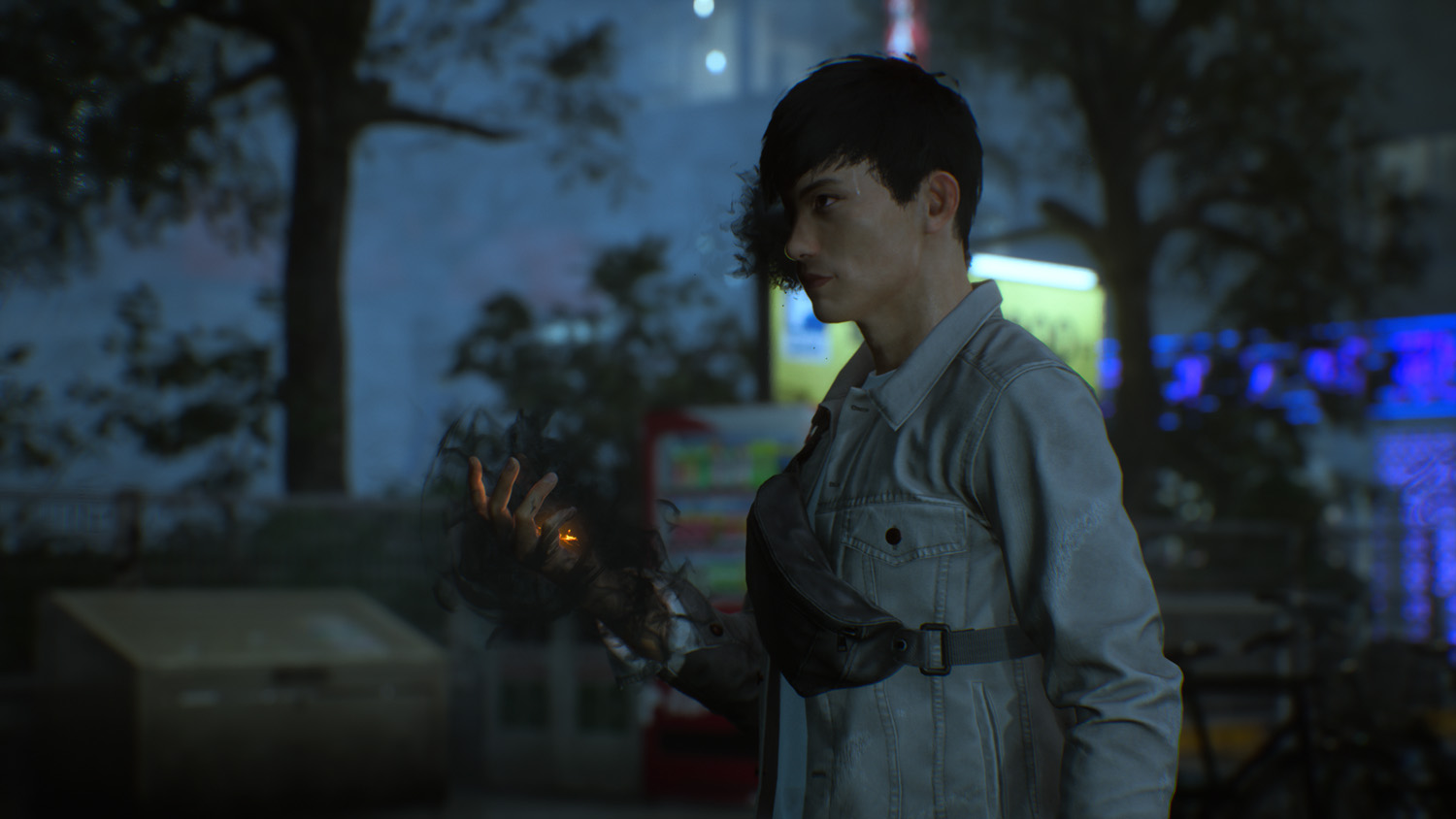
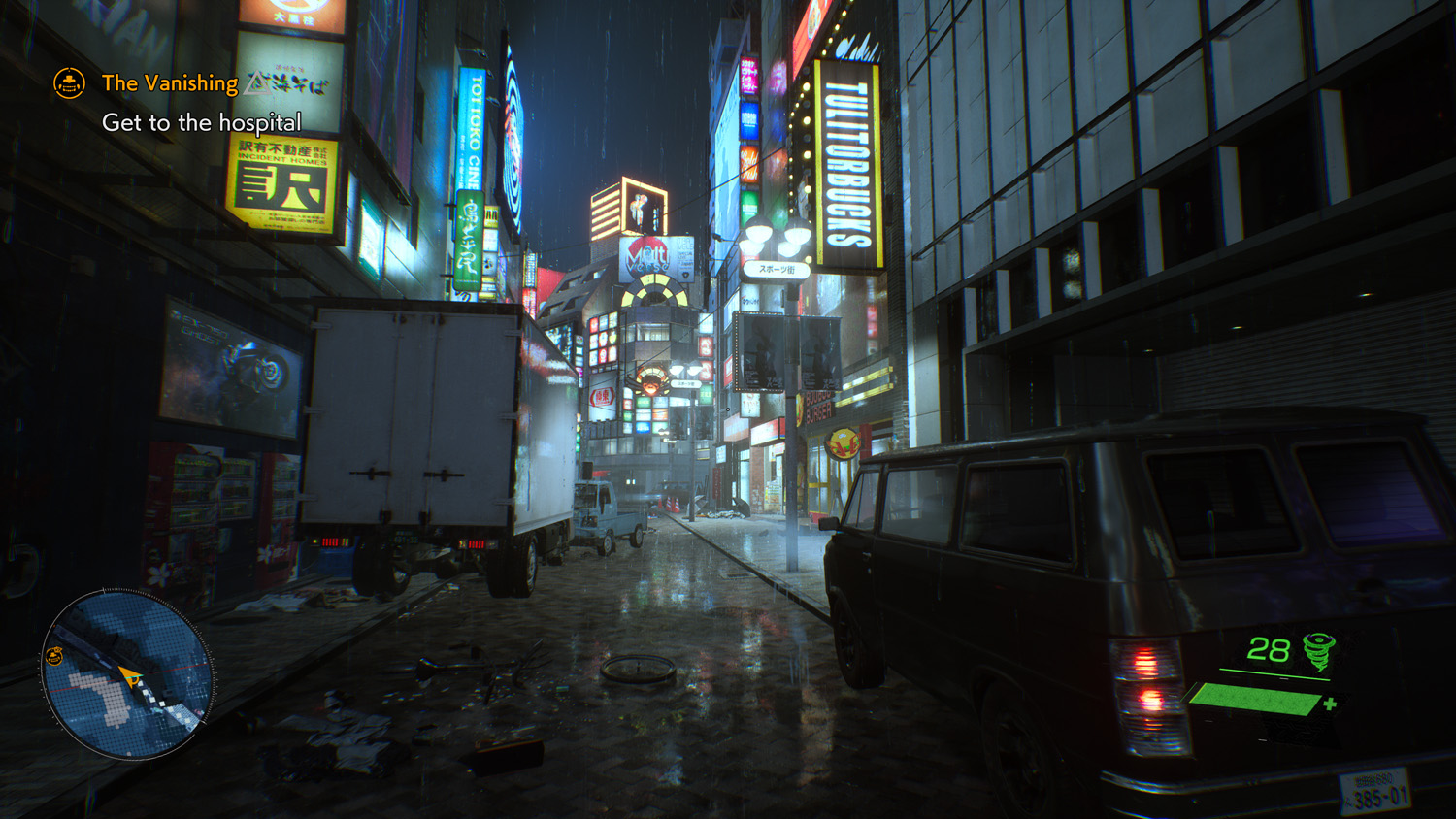
Tokyo adrift
As far as open worlds go, Ghostwire: Tokyo starts off fairly linear, as you’re quite limited to where you can move because of the mysterious and toxic fog that’s enveloped the city. Of course, you’ll gradually have more freedom to explore as you slowly clear the fog by cleansing Torii gates located all around the city, sometimes at local shrines, other times in more unexpected places. Think of them as towers in Far Cry, with all the daunting number of collectible icons and quests that pop up on the map afterwards.
Shibuya is by no means a massive open world (much of the fog you see in the map actually remains that way) but it’s easily the most fun we’ve had exploring a virtual Tokyo since the Yakuza series. All the rain, puddles and shiny neon surfaces also make a strong case for playing the game in quality mode for all that ray-tracing goodness.
Tokyo is of course also densely packed so there’s always something to investigate or seek out, in particular the hundreds of thousands of spirits floating all around town who you’re also trying to save. This often leads you to higher ground, possible thanks to KK’s ability to grapple tengu (flying yokai, fortunately the benevolent kind). They only appear in certain areas and once in the air, Akito can only glide in the air for a few seconds (though you can upgrade this slightly) but it’s still fun working within these limitations to get really high up and spot another blue spectre you can save, or simply just marvel at the view of Tokyo at night.

Who you gonna call
What really brings Tokyo to life are all the little culturally specific details that only feel possible from a Japanese studio. Everything you come across has an in-depth description telling you a little something about its history and significance in Japan, from daruma dolls and Shinto rituals to even the many snacks you pick up to recover your health.
One especially outstanding twist is how you rescue spirits by absorbing them into paper dolls and then going to phone booths around the city that have been especially rewired so that their spirits can be sent out of the city to safety. It’s just out-of-this-world genius, and of course the animations for it are a delight.
Perhaps some of this won’t resonate if you’re not a Japanophile, though who wouldn’t be charmed by floating cat merchants or mischievous tanuki disguising themselves as everyday items (speaking of which, animal lovers will be pleased they can also pet and even converse with the many stray cats and dogs in the city). It’s ultimately this element that successfully disguises the fact that you’re still mostly playing a rote collectathon seen in countless other open world games.
Similarly, the side missions are more fascinating than the main story itself, where Akito is basically trying to rescue his hospitalised sister but much of their relationship and history feels underdeveloped. The most interesting ones are when you get to venture indoors, and while these are separate environments rather than part of a seamless open world, it’s mitigated by the PS5’s superfast loading times. But bespoke levels also allows licence for the architecture to get weird, reminiscent of the shapeshifting, hallucinatory interiors of The Evil Within 2 or Control.
It’s just as well that the campaign itself is actually quite brief because Ghostwire: Tokyo’s living characters are less interesting than the spectres, yokai and all-round weirdness you can find all over the city. It’s that rarity of an open world you’ll still want to explore after completing the story but at a size that won’t take over your life.
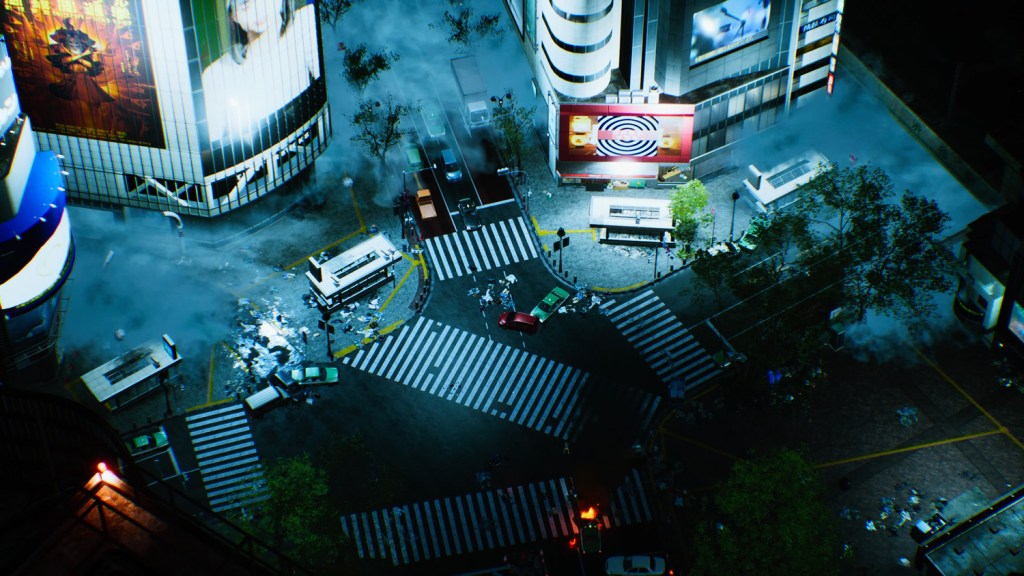
Ghostwire: Tokyo verdict
The small open world of Shibuya isn’t exactly transformative nor is combat super compelling once you peel back the stylish hand flourishes, but the loving attention to detail, brilliantly served on next-gen hardware, makes Ghostwire: Tokyo the perfect post-pandemic game.
While it’s still going to be a while before any of us can plan a holiday to Japan, this is another great way to play virtual tourist, whether it’s visiting shrines or catching notes of jazz or commercial jingles from nearby buildings while at the same time blasting ghosts back to their nether regions.
Stuff Says…
The perfect post-pandemic game – a super way to play virtual tourist even if the combat and story aren’t the best
Good Stuff
Authentic Japanese presentation
Exploring Tokyo (especially on higher ground)
Fun sidequests and spooky interiors
Bad Stuff
Main story and protagonist aren’t that engaging
Combat looks better than it plays



